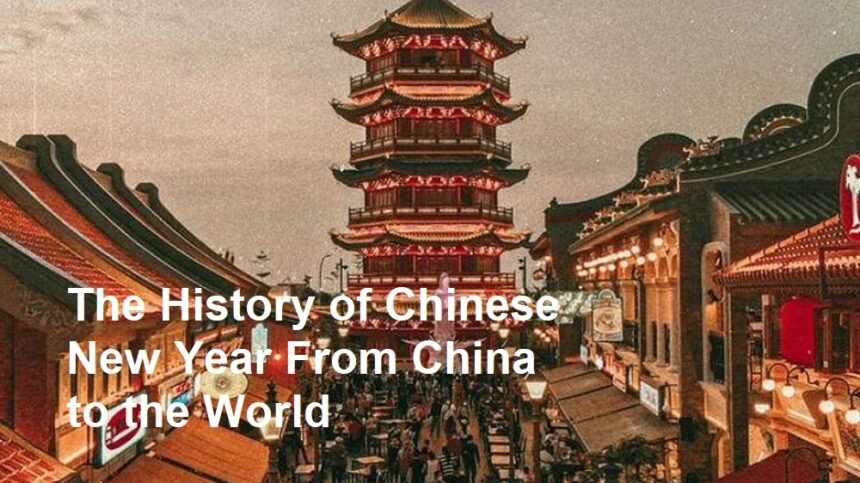Chinese New Year, also known as Lunar New Year or Spring Festival, is one of the most important and widely celebrated festivals in the world. It marks the beginning of the lunar new year, typically falling between January 21 and February 20, and is celebrated by millions of people around the globe. The festival has a rich history that dates back over 4,000 years, and its traditions have evolved and spread beyond China, influencing various cultures worldwide.
The origins of Chinese New Year can be traced to ancient China, where it was originally a festival to honor deities and ancestors. In early times, the festival was closely linked to agricultural practices and the end of winter. The Chinese people would celebrate the arrival of spring, hoping for good harvests in the coming year. The festival was also seen as a time to ward off evil spirits and bring good luck for the year ahead.
The most well-known myth associated with Chinese New Year involves a fearsome creature called the “Nian,” a monster that would come down from the mountains at the beginning of the new year to terrorize villages. To protect themselves, people would use firecrackers, red decorations, and loud noises to scare away the Nian. This belief is why the color red and the use of firecrackers are such integral parts of the celebration today.
The Chinese New Year is based on the lunar calendar, which is different from the Gregorian calendar used in most of the world today. The lunar calendar follows the phases of the moon, with each year corresponding to an animal in the Chinese zodiac, a system that was introduced during the Han Dynasty (206 BCE–220 CE). The Chinese zodiac consists of twelve animals, including the rat, ox, tiger, rabbit, dragon, snake, horse, goat, monkey, rooster, dog, and pig. Each animal is associated with certain characteristics and is believed to influence the fortune of those born in that year.
Over time, the festival became more elaborate, with traditions such as family reunions, feasts, and the giving of red envelopes filled with money (known as “hongbao”) to children and unmarried adults. These traditions were meant to symbolize good fortune and prosperity for the year ahead.
As the Chinese population began to migrate to other parts of the world, especially during the 19th and early 20th centuries, Chinese New Year celebrations spread to many different countries. Chinese immigrants brought their customs and traditions to places such as Southeast Asia, the United States, Canada, and Europe, where they began to blend with local cultures. In countries with significant Chinese communities, such as Singapore, Malaysia, Thailand, and Indonesia, the holiday became an official public holiday.
In the United States, Chinese New Year celebrations became particularly prominent in cities with large Chinese populations, such as San Francisco, New York, and Los Angeles. The first Chinese New Year parade in San Francisco was held in 1850, and today it is one of the largest and most famous Chinese New Year parades outside of China. These celebrations have become more inclusive over time, with people from all cultural backgrounds joining in the festivities.
In recent decades, Chinese New Year has gained recognition and popularity worldwide, even in countries with small Chinese populations. The global reach of Chinese New Year celebrations can be seen in major cities across the world, where iconic landmarks are often illuminated in red, and public events such as parades, festivals, and performances take place.
In cities like London, Paris, Sydney, and Vancouver, Chinese New Year is celebrated with street festivals, dragon dances, and fireworks. These events are often embraced by people of all nationalities, and they serve as a celebration of Chinese culture and heritage.
In addition to the public festivities, Chinese New Year has become a time for businesses to celebrate with special promotions and products, especially in countries where the Chinese community has a significant presence. Retailers in the United States, for example, have started offering Chinese New Year-themed goods, and the entertainment industry has recognized the significance of the holiday, with TV shows and films often featuring New Year-related themes.
From its humble beginnings as an agricultural festival in ancient China to its current status as a global celebration, Chinese New Year has a rich and fascinating history. The festival’s enduring appeal lies in its ability to bring people together, regardless of their cultural background, to celebrate the values of family, prosperity, and renewal. As Chinese communities continue to grow around the world, the influence of Chinese New Year will likely continue to spread, fostering a greater appreciation for Chinese traditions and the spirit of the lunar new year.













